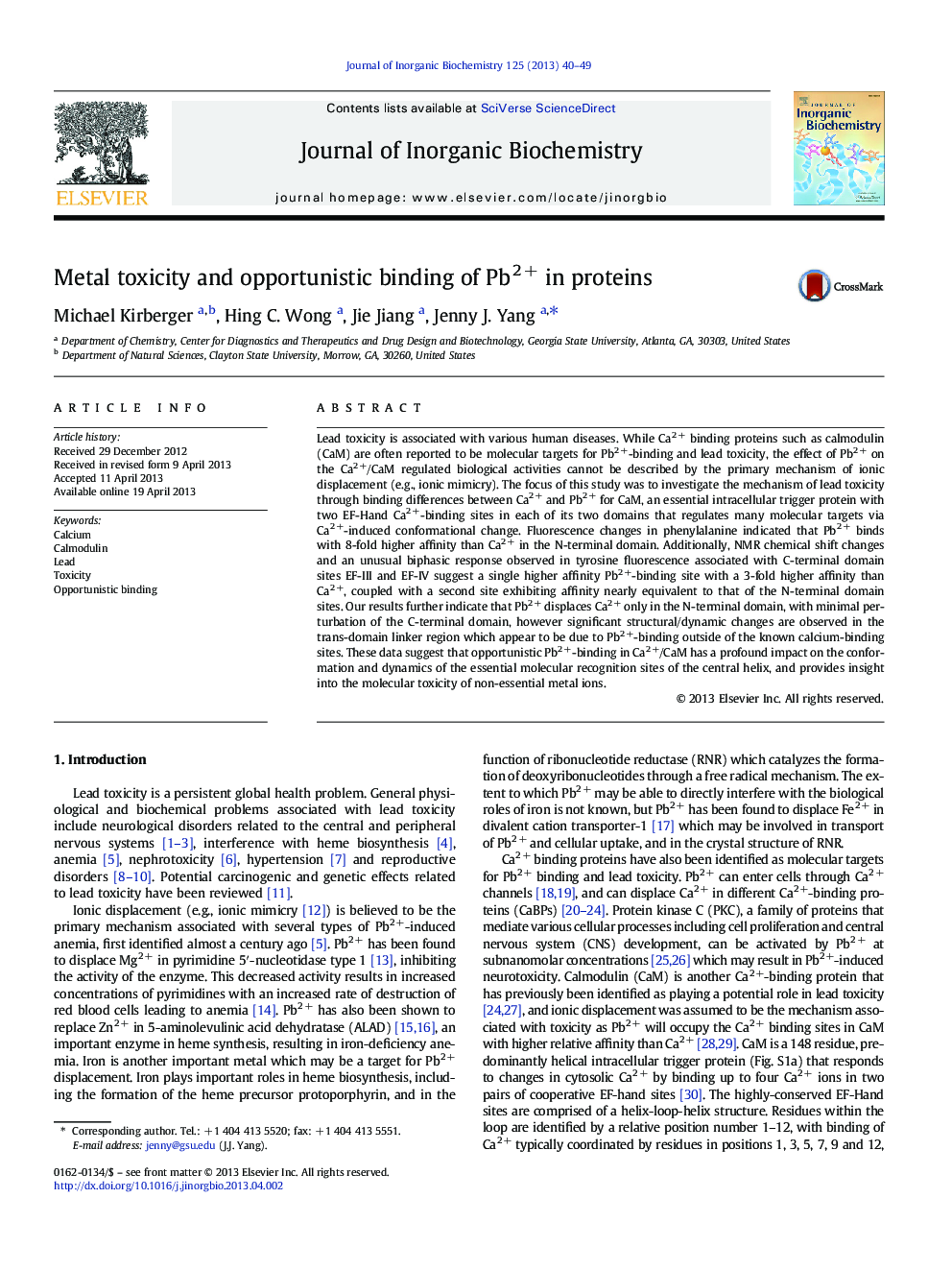| Article ID | Journal | Published Year | Pages | File Type |
|---|---|---|---|---|
| 1317595 | Journal of Inorganic Biochemistry | 2013 | 10 Pages |
•Pb2 + displaces Ca2 + in the N-terminal, but not the C-terminal domain, of calmodulin.•Pb2 + binding affinity is only 3- to 8-fold higher than Ca2 + in Ca2 +-binding sites.•Opportunistic binding of Pb2 + outside of Ca2 + sites alters protein conformation.•Pb2 + toxicity may be due to opportunistic binding, rather than by displacement.
Lead toxicity is associated with various human diseases. While Ca2 + binding proteins such as calmodulin (CaM) are often reported to be molecular targets for Pb2 +-binding and lead toxicity, the effect of Pb2 + on the Ca2 +/CaM regulated biological activities cannot be described by the primary mechanism of ionic displacement (e.g., ionic mimicry). The focus of this study was to investigate the mechanism of lead toxicity through binding differences between Ca2 + and Pb2 + for CaM, an essential intracellular trigger protein with two EF-Hand Ca2 +-binding sites in each of its two domains that regulates many molecular targets via Ca2 +-induced conformational change. Fluorescence changes in phenylalanine indicated that Pb2 + binds with 8-fold higher affinity than Ca2 + in the N-terminal domain. Additionally, NMR chemical shift changes and an unusual biphasic response observed in tyrosine fluorescence associated with C-terminal domain sites EF-III and EF-IV suggest a single higher affinity Pb2 +-binding site with a 3-fold higher affinity than Ca2 +, coupled with a second site exhibiting affinity nearly equivalent to that of the N-terminal domain sites. Our results further indicate that Pb2 + displaces Ca2 + only in the N-terminal domain, with minimal perturbation of the C-terminal domain, however significant structural/dynamic changes are observed in the trans-domain linker region which appear to be due to Pb2 +-binding outside of the known calcium-binding sites. These data suggest that opportunistic Pb2 +-binding in Ca2 +/CaM has a profound impact on the conformation and dynamics of the essential molecular recognition sites of the central helix, and provides insight into the molecular toxicity of non-essential metal ions.
Graphical abstractElectrostatic potential map of Pb2 +-bound calmodulin protein from PDB file 2v01 with proposed binding of Pb2 + in the carboxyl-rich linker region.Figure optionsDownload full-size imageDownload as PowerPoint slide
